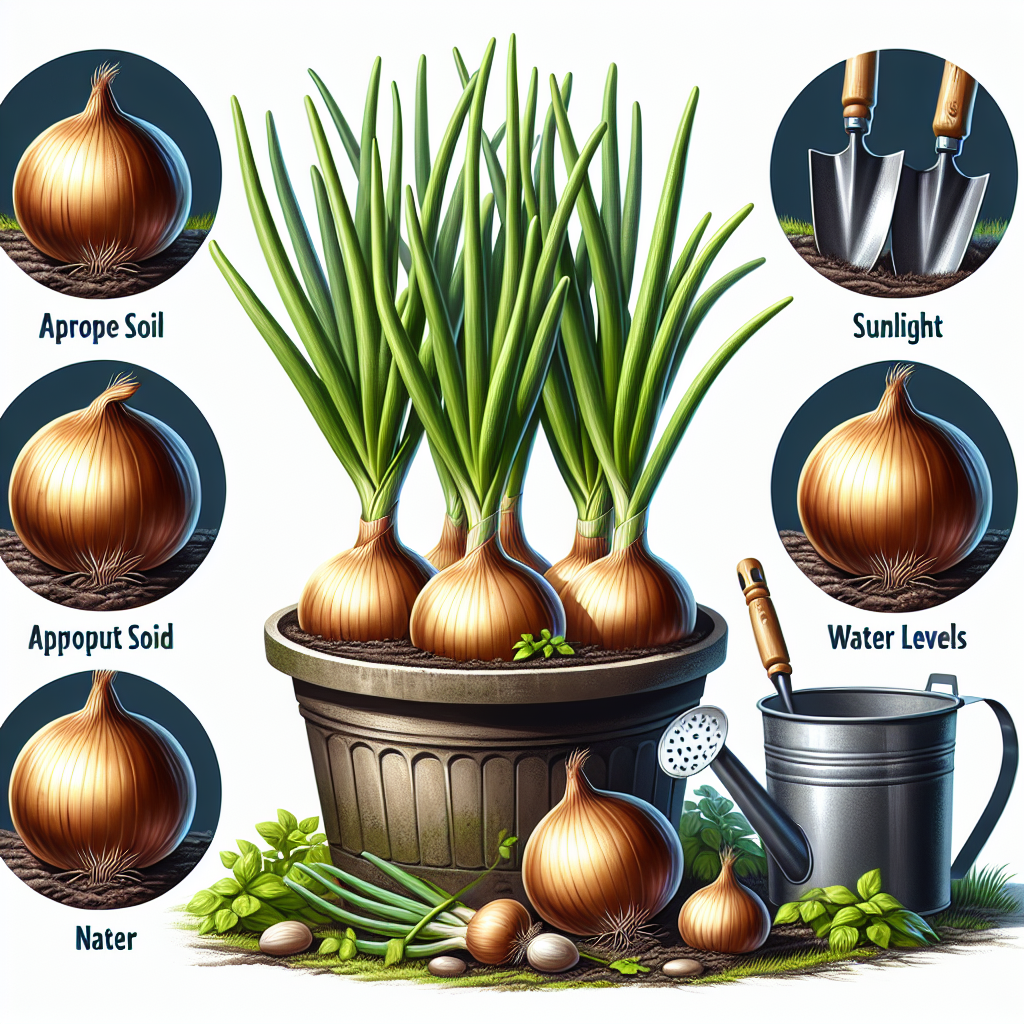Onions are a staple in many households and are used in a wide variety of dishes to add flavor and depth. While onions are traditionally grown in the ground, they can also be successfully grown in containers, making them a great option for those with limited space or poor soil quality. Growing onions in containers requires some specific care and attention, but with the right tips and techniques, you can easily grow larger onions that are healthy and flavorful.
Choose the right container
When growing onions in containers, it’s important to choose the right container size and type. Onions require deep soil to grow properly, so choose a container that is at least 12 inches deep. Additionally, make sure the container has adequate drainage holes to prevent waterlogging, which can cause root rot.
Use quality soil
Onions prefer well-draining soil that is rich in organic matter. Use a high-quality potting mix that is specifically formulated for vegetables or mix your own using equal parts compost, peat moss, and perlite or vermiculite. Avoid using regular garden soil, as it can become compacted in containers and inhibit root growth.
Planting onions
When planting onions in containers, choose onion sets or seedlings rather than seeds, as they will produce larger bulbs more quickly. Plant onion sets or seedlings about 1 inch deep and 4 inches apart in rows spaced 6 inches apart. Make sure the tops of the bulbs are above the soil level to prevent rotting.
Watering
Onions require consistent moisture to grow properly but do not like to be waterlogged. Water regularly but allow the top inch of soil to dry out between waterings. Overwatering can cause bulbs to rot, while underwatering can result in small bulbs.
Fertilizing
Onions are heavy feeders and require regular fertilization to produce large bulbs. Fertilize every two weeks with a balanced liquid fertilizer or top-dress with compost or aged manure every month. Be sure to follow the instructions on the fertilizer package carefully to avoid overfertilizing.
Mulching
Mulching around your onion plants can help retain moisture in the soil, suppress weeds, and regulate soil temperatures. Use a layer of organic mulch such as straw or shredded leaves around your plants, being careful not to bury the bulb itself.
Thinning
As your onion plants grow, you may notice overcrowding or small bulbs forming close together. Thin out smaller bulbs by gently pulling them from the soil, leaving space for larger bulbs to continue growing unimpeded.
Pest control
Onions are relatively pest-resistant but may be susceptible to pests such as onion maggots, thrips, and aphids. Monitor your plants regularly for signs of pest damage and treat infestations promptly with insecticidal soap or neem oil.
Harvesting
Onions take several months to mature from planting until harvest. When the tops begin to yellow and fall over naturally, it’s time to harvest your onions. Carefully lift them from the soil using a garden fork or trowel and allow them to cure for 1-2 weeks in a warm place with good air circulation before storing.
Storing
Once cured, store your harvested onions in a cool (but not cold), dark place with good ventilation such as an airy basement or garage. Avoid storing onions near potatoes or other fruits and vegetables that emit ethylene gas as this can cause premature sprouting.
In conclusion, growing larger onions in containers is entirely possible with some careful planning and attention to detail. By choosing the right container size and type, using quality soil, proper planting techniques,
adequate watering,fertilizing regularly,mulching when necessary,
thinning out smaller bulbs,paying attention
to pest control,and harvesting
and storing correctly,you can enjoy a bountiful crop of delicious onions that will add flavor
and nutrition
to your favorite dishes.
So go ahead,
give it a try,
and start growing
your own
large juicy onions today!













